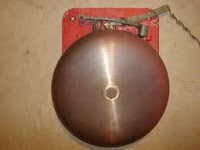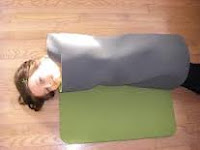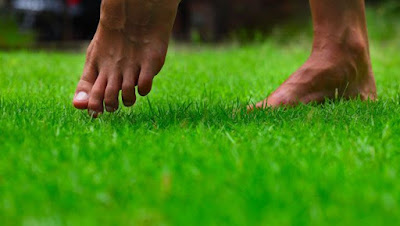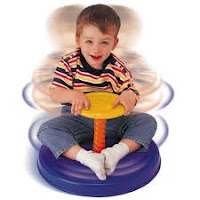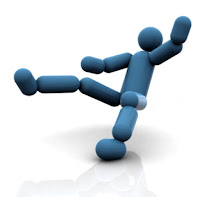Tricks and Tips for Parents and Teachers
by Elise Siak, Occupational Therapist
Again
because sensory processing disorder is complex and the challenges associated
with it are unique to the individual, it is difficult to provide strategies
which can help any and all children with sensory processing disorder. There are, however, some strategies that tend to work well for most children with sensory
processing disorder and sensory processing challenges. See last week’s post for
more information on the proprioceptive and vestibular systems, as these systems
are very important to understand in order to fully grasp the rest of the
information in this post.
Classroom-Based Sensory Strategies
The
classroom environment can pose a unique set of challenges for children with a sensory processing disorder or sensory processing challenge.
Think about the variety of situations during a typical school day which involve a notable lack of enriching sensory input like sitting at a desk for long periods of time, riding the bus, standing in line, and fire drills.
Then think about the variety of situations during a typical school day which involve an overload of stimulation over which children have no control like the ringing of the school bell, loud and crowded hallways, or the glare of overhead lights.
Because some children with sensory processing disorder can be sensitive to too much of any one type of sensory input or require increased amounts of any one type of sensory input, pinpointing specific strategies to help with classroom challenges is tough. However, as a rule of thumb, you should keep in mind that whether a child wants more or less input, they will find a way to either limit or get more input.
Children who want more input will find a way to get that input one way or another--jumping, spinning, and running, wriggling in their chairs to the point of being disruptive, or even pushing other children when standing in line.
Children who need to limit sensory input may attempt to run away at the sound of the school bell, cover their ears, yell, or other similar behaviors in order to avoid the overload of stimulation.
Think about the variety of situations during a typical school day which involve a notable lack of enriching sensory input like sitting at a desk for long periods of time, riding the bus, standing in line, and fire drills.
Then think about the variety of situations during a typical school day which involve an overload of stimulation over which children have no control like the ringing of the school bell, loud and crowded hallways, or the glare of overhead lights.
Because some children with sensory processing disorder can be sensitive to too much of any one type of sensory input or require increased amounts of any one type of sensory input, pinpointing specific strategies to help with classroom challenges is tough. However, as a rule of thumb, you should keep in mind that whether a child wants more or less input, they will find a way to either limit or get more input.
Children who want more input will find a way to get that input one way or another--jumping, spinning, and running, wriggling in their chairs to the point of being disruptive, or even pushing other children when standing in line.
Children who need to limit sensory input may attempt to run away at the sound of the school bell, cover their ears, yell, or other similar behaviors in order to avoid the overload of stimulation.
Finding an effective way to channel a child’s natural sensory needs into
more constructive means is the best way to have a happy child and a better
functioning classroom!
Some
strategies that can be used include a variety of ways to provide proprioceptive
input, as well as other types of input, and include the following:
- Weighted lap pad
- Wiggle cushion or therapy ball chair
- Use of a resistance band tied around the front legs of a classroom chair so that the child can kick it back and forth with their legs while seated
 |
Stretchy Hulk Sensory Toy |
- Various fidgets, including squishy balls, putty, coil-type toys, etc.
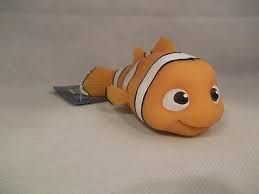 |
Nemo Squishy Tactile Toy |
- Calm-down bottles with glitter and food coloring for use in a calm down corner or before nap time
- A piece of the rough side of Velcro that can be placed under the desk and rubbed when extra sensory input is needed
 |
Calm Down Bottle |
- Chewy tubes/fidgets which attach to the end of a pencil
- Water bottle which requires forceful sucking or has a bite valve (like a camelback water bottle)
- Regular breaks in seated work including chair push-ups, wall push-ups, jumping jacks, toe touches, etc. (This type of break would be beneficial for all students!)
 |
| Wall Push Up |
 |
Chair Push Up |
Home-Based Sensory Strategies
Because home
is naturally a less structured environment than school, the possibilities are
nearly endless for ways to work sensory input into a child’s experiences! See
the previous post for some specific strategies related to the proprioceptive
and vestibular systems. Some fun ideas for novel sensory experiences at home
include:
- Making a calm-down corner using a pop-up play tent, weighted blanket or stuffed animal, calm-down bottle, and CD played with calming music
 |
Quiet Tent |
 |
Quiet Corner |
- Tactile sensory play which can include sand and water play, finger painting, playing with cornstarch and water mixed together (side note: if you’ve never tried this, you must! It is so much fun!), playing with silly putty or play dough
 |
Sand and Water Table |
- Making a stress ball/fidget toy out of two balloons and flour- place one balloon inside of the other, fill the inner balloon with flour, tie off both balloons, and voila!
- Making a calm-down bottle with an empty water bottle, clear soap, food coloring, and glitter
- Straw games, including blowing a pompom with a straw either straight ahead or through a maze made of blocks
- Use of a weighted blanket, weighted vest, or compression clothing--please consult with an occupational therapist or other healthcare professional with knowledge of sensory processing before beginning any sort of weighted material use with your child
- Scooter board games, including using hands only to move it forward while lying on the stomach
- Pop-up tunnels and/or fabric tunnels--for increased proprioceptive input
- Body sock (similar to a fabric tunnel, but smaller and closed off on one side) provides proprioceptive input across the majority of the body
- Climbing activities, including climbing a rock wall, playground equipment, stairs etc.
Again, while each child with sensory processing disorder is unique in their specific challenges, hopefully these strategies will help to provide a starting point for better understanding your child (or student) and helping them to be more confident, focused, and happy in their day-to-day lives! If you suspect that your child has sensory processing disorder or sensory processing challenges, you should consult with your child’s pediatrician and an occupational therapist in order to most effectively help in understanding and assisting your child to live up to their full potential!
Guest Blogger Elise Siak:
I have always been interested in working in pediatrics, even before discovering occupational therapy. Since discovering OT, I have thrived on the creativity and connections with clients with which this profession provides me. I have passion for working with children with sensory processing and self-regulation challenges. I have experience working with both children and adults on the autism spectrum, as well as children with a variety of developmental challenges and delays. I hope to be able to provide both parents and other therapists alike with some insight into sensory processing disorders!
This Concludes our Series on Sensory Processing Disorders. Hopefully this information has been helpful. We welcome your comments and suggestions!
Blog Administrator: Trisha Roberts
Copyright © 2016 TNT Inspired Enterprise, LLC, All rights reserved.
Unauthorized duplication is a violation of applicable laws.




